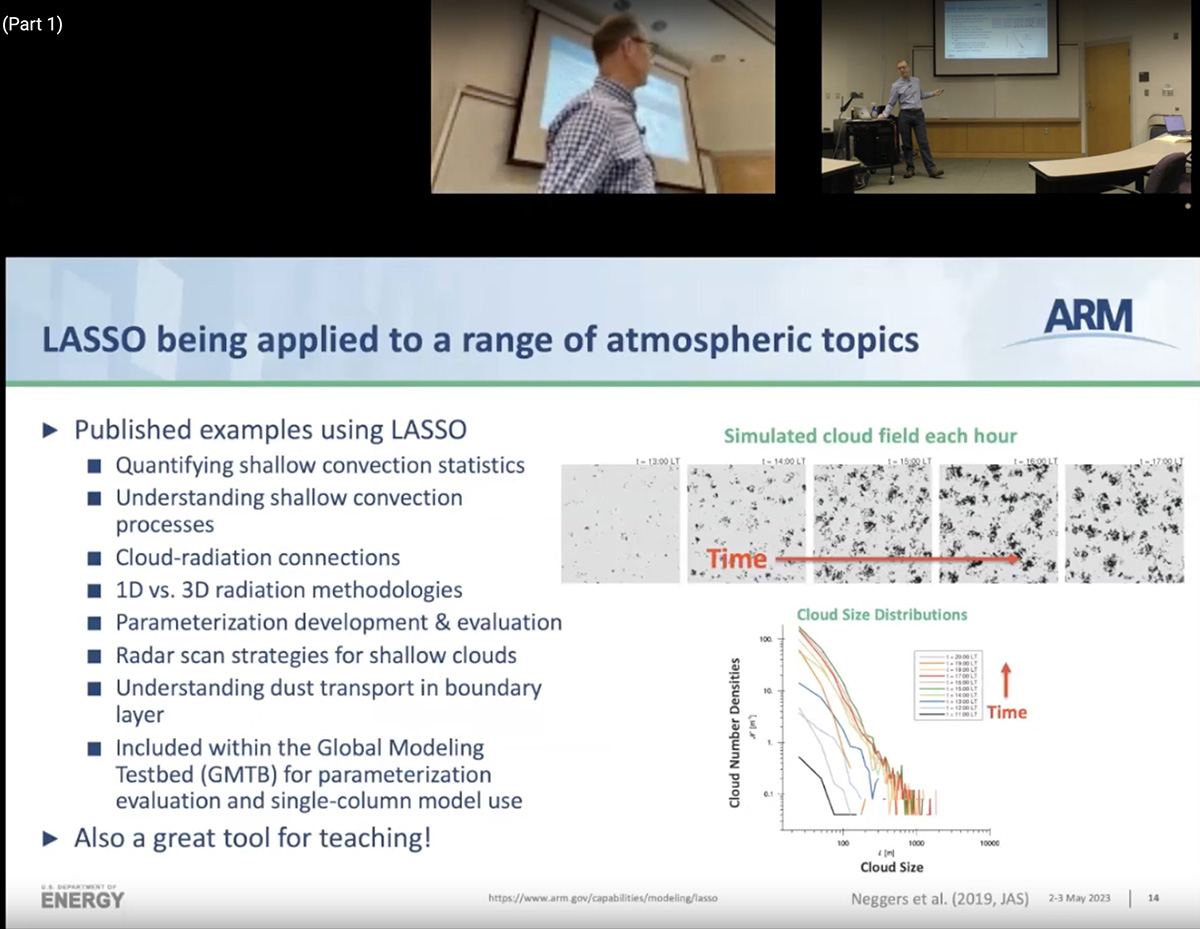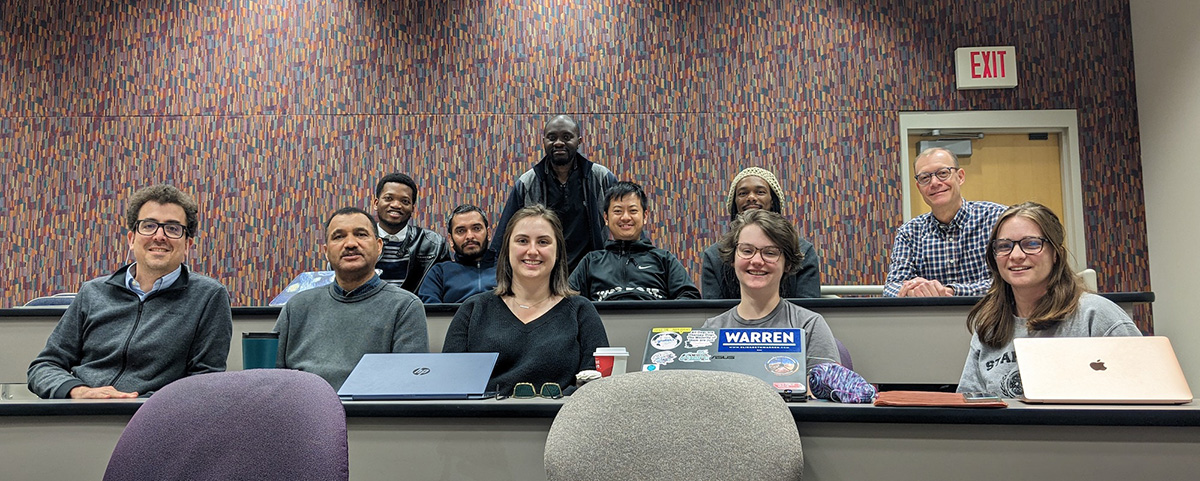Successful LASSO Tutorial Held at University of Maryland, Baltimore County
Published: 26 June 2023
Editor’s note: William Gustafson, principal investigator for the Large-Eddy Simulation (LES) ARM Symbiotic Simulation and Observation (LASSO) activity, and Henrique Barbosa, an associate professor in the University of Maryland, Baltimore County (UMBC) Department of Physics, provided the following blog post.

On May 2 and 3, 2023, the Atmospheric Radiation Measurement (ARM) user facility, in conjunction with the UMBC Department of Physics, held a hybrid tutorial on the LASSO activity. This two-day event, taught at UMBC by LASSO Principal Investigator William Gustafson, focused on both the established LASSO shallow convection scenario and the new deep convection scenario, which is currently in beta release form.
Students learned about the contents of each scenario, the science drivers influencing the scenario designs, details about the LES model configurations, and information about observations associated with the simulations.
In addition, each afternoon had a session for students to explore the LASSO data through hands-on time working with code and investigating a user-selected application of LASSO.
Chetan Gurung, a second-year PhD student at UMBC, reports: “The tutorial for LASSO was incredibly beneficial in enhancing my understanding of the LASSO concept and the process of selecting the most suitable simulation from the data bundle browser. Moreover, working with Dr. Gustafson on the hands-on activities was very helpful to really start using the bundles.”
At the end of the tutorial, students shared a range of applications that incorporated LASSO LES output. Examples include using the atmospheric LES fields to drive a dust emission parameterization to understand scale dependencies of the parameterization, running a three-dimensional Monte Carlo radiation code based on the LES data and comparing this to a one-dimensional approach, and using image analysis software to identify and analyze cloud characteristics in the LES.

“This was a great opportunity to get out of my DOE laboratory and into the university setting, where the up-and-coming students are that can benefit from ARM’s extensive atmospheric data,” says Gustafson.
The tutorial had 48 registered participants from 25 countries. About 20 attendees joined in person from UMBC and surrounding schools, such as Howard University.
ARM would like to thank Henrique Barbosa, who hosted the tutorial at UMBC with the help of Zhibo Zhang, also from UMBC.
The U.S. Department of Energy Office of Science provided funding for the tutorial through a Research Development and Partnership Pilot (RDPP) grant, and ARM funded Gustafson’s time. The goal of RDPP funding “is to foster the development of climate, Earth, and environmental science research and training capacity at underrepresented institutions.”
Videos and the associated slides are available for the three primary lectures:
| Part 1: The LASSO Concept and Shallow Convection Modeling | Video | Slides |
| Part 2: Observations and Data Bundle Selection | Video | Slides |
| Part 3: LASSO-CACTI – Deep Convection | Video | Slides |
Do You Have LASSO Questions?
Questions about LASSO can be sent to Gustafson and the LASSO development team at lasso@arm.gov and through LASSO’s online forum.
Keep up with the Atmospheric Observer
Updates on ARM news, events, and opportunities delivered to your inbox
ARM User Profile
ARM welcomes users from all institutions and nations. A free ARM user account is needed to access ARM data.


















